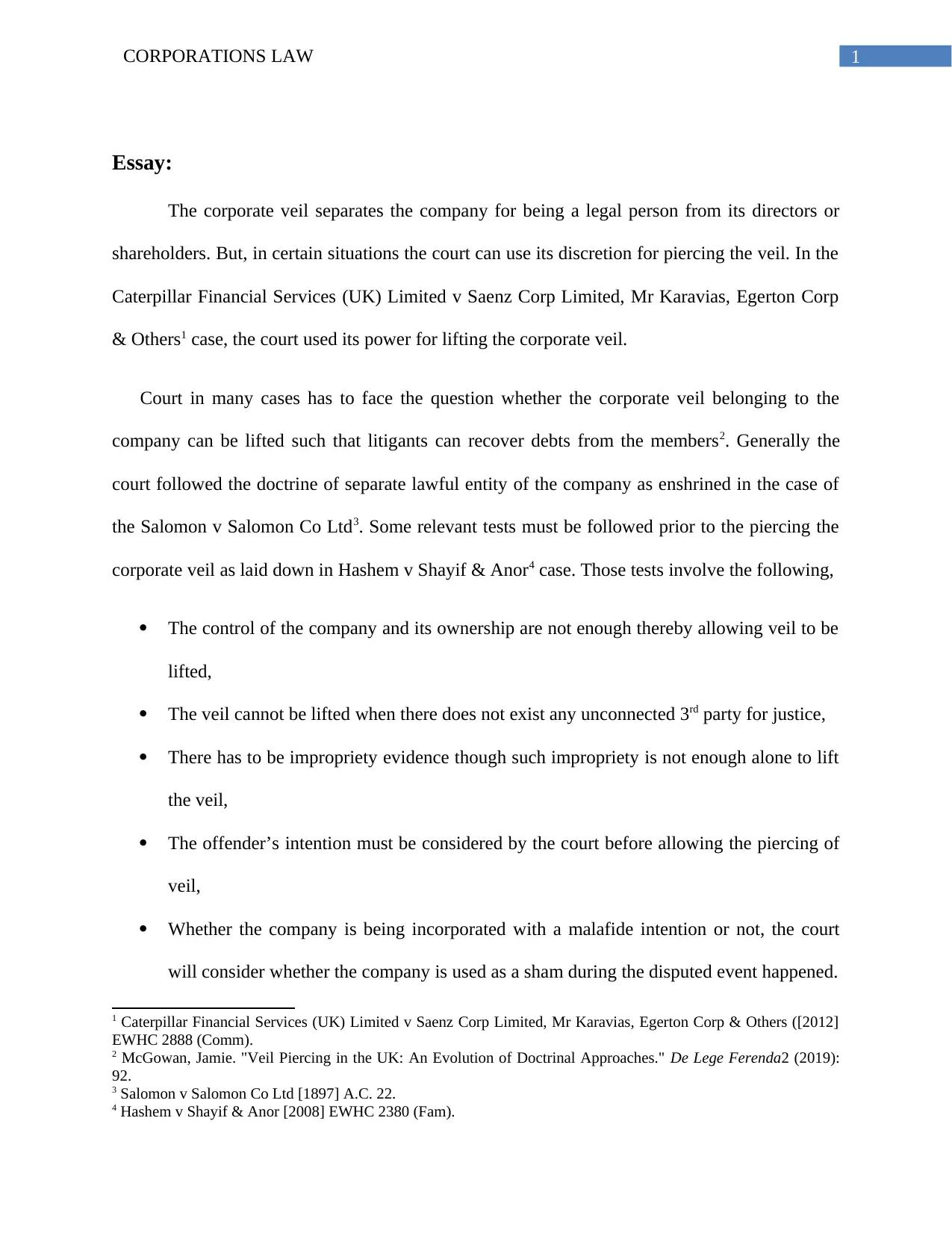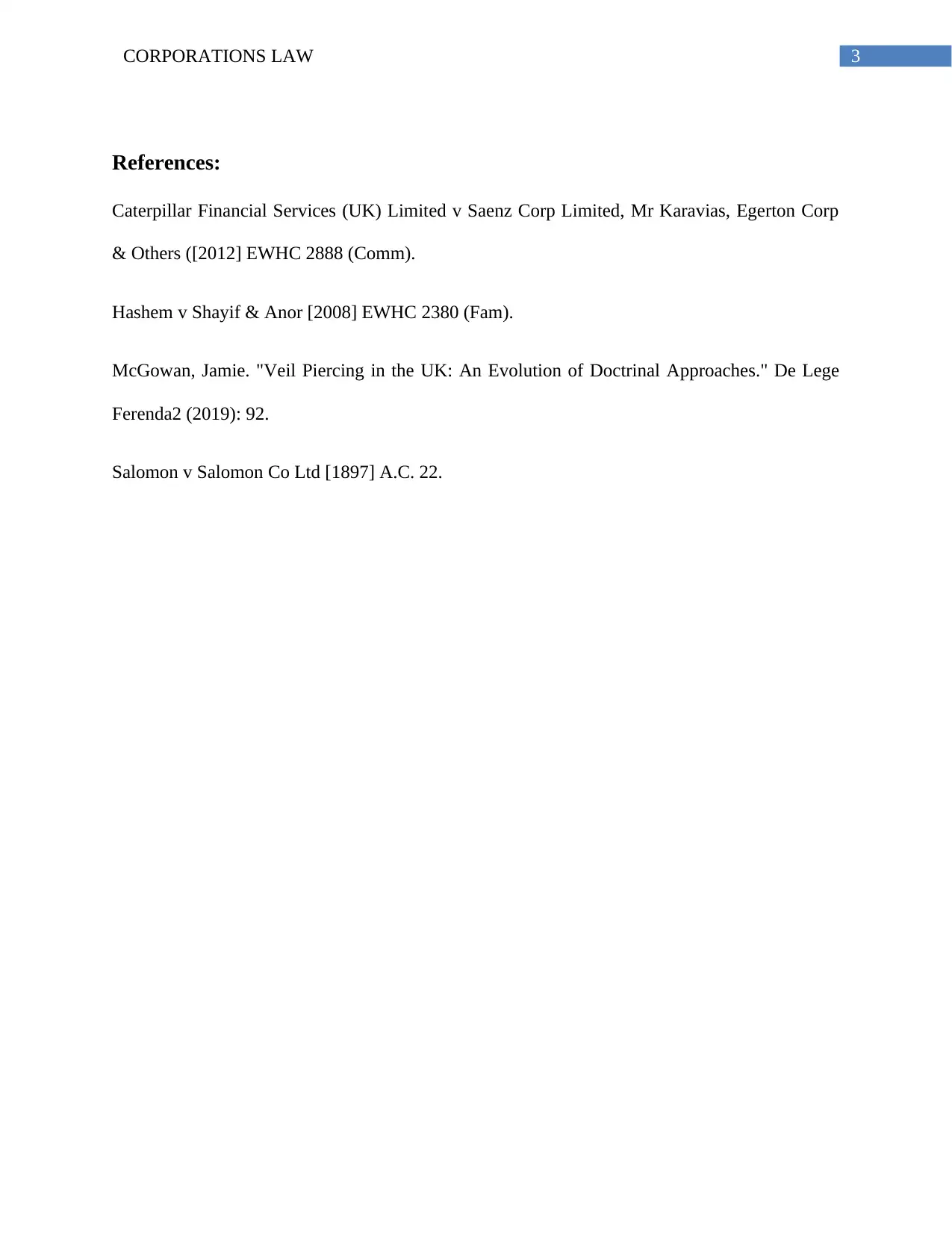Corporate Veil: Judicial Discretion, Case Law, and Academic Opinion
VerifiedAdded on 2022/12/29
|4
|496
|88
Essay
AI Summary
This essay critically examines the statement that setting specific rules for lifting the corporate veil is impossible, focusing on the judicial discretion and evolving attitudes within company law. The essay analyzes relevant UK case law, including Caterpillar Financial Services (UK) Limited v Saenz Corp Limited, Salomon v Salomon Co. Ltd, and Hashem v Shayif & Anor, to illustrate the complexities and occasional contradictions in this area. It explores the tests used by the courts, such as the intention of the offender and whether the company was used as a sham. The essay references academic opinion to further evaluate the statement, providing a comprehensive understanding of the corporate veil's application and the challenges of its legal interpretation.
1 out of 4






![[object Object]](/_next/static/media/star-bottom.7253800d.svg)